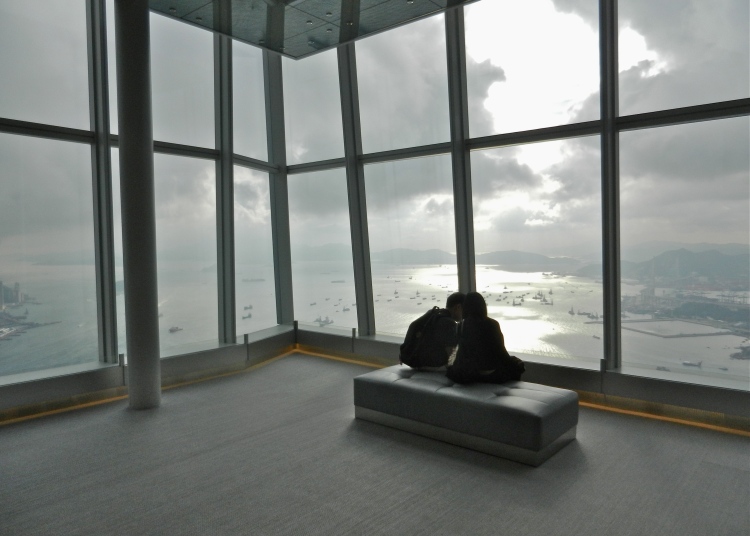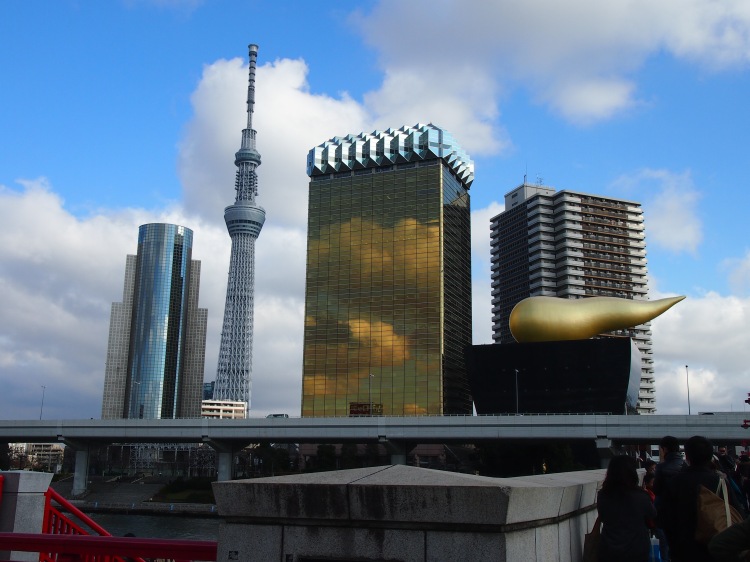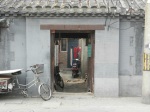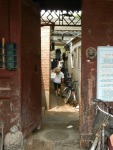The visibility in Beijing in notoriously awful, a by product of rapid urbanization, an exploding vehicle population, and reliance on coal for personal heating and power generation. So, when opportunities like this present themselves, to see the urban and suburban sprawl of Beijing (and its 20 million or so residents) spread out across the North China Plain, its quite fun. These were taken with the Hiking Around Beijing crew, from the peaks at Badachu Park, an area filled with old monasteries that overlook the Beijing Botanical Gardens.
Tag Archives: cities
Pictures of Things: Beijing Smog
Pictures of Things: 100 Floors
 Looking east across Kowloon from the Sky100 observation deck in the International Commerce Center (ICC) in Hong Kong. A singularly vertical city (it has more buildings above 35m, 100m, and 150m than any other), Hong Kong is a place where even apartments and flats are built to massive scales.
Looking east across Kowloon from the Sky100 observation deck in the International Commerce Center (ICC) in Hong Kong. A singularly vertical city (it has more buildings above 35m, 100m, and 150m than any other), Hong Kong is a place where even apartments and flats are built to massive scales.
 A couple enjoys a breathtaking panoramic view of Victoria Harbor from the 100th floor of the ICC. Victoria Harbor is home to one of the busiest ports on earth, carrying manufactured goods from China to the rest of the world.
A couple enjoys a breathtaking panoramic view of Victoria Harbor from the 100th floor of the ICC. Victoria Harbor is home to one of the busiest ports on earth, carrying manufactured goods from China to the rest of the world.
First Impressions: Tokyo, Japan
It’s easy to be overwhelmed by new surroundings. Stepping into a Tokyo subway station is like stumbling off an elevator onto a casino floor. A sudden flood of lights and sounds and signage. Mostly foreign, all insistent. Exposure to such an intense sensory environment also initiates a kind of flight or fight response: what do I do? where do I go? I’m already lost! And let the panic roll. This is of course due to unfamiliarity. With a bit of time and repetition, the station noises would fade out, relevant information would take center stage, and things would start making sense (although this fact does very little to help first time visitors in places as intimidating as Tokyo).
It’s also an understandable human tendency to draw conclusions and make potentially crude generalizations, a habit that most likely (see what I did?) has a biological explanation. But, generalize I must. As mentioned, Tokyo is well lit. It is a very bright place. It is also covered in signs of every conceivable type. Instructional, directional, advertorial, informational, prohibitional – Tokyo is probably the diagrammatic, public-posting capitol of the planet.
Tokyo is a procedural city, lacking any visible hint of the ad hoc atmosphere found in places like, say, Beijing¹. Traffic is organized, the sidewalk is conspicuously divided into pedestrian and bicycle halves. Trains and subway cars are clearly and redundantly marked with points of entry and egress – everyone observes this information and acts accordingly. Cellphone use is prohibited on the subway – everyone also observes this. Lines form and function smoothly. People do not jaywalk, or litter really, turning vehicles do not try and out maneuver pedestrians with right-of-way. I assume all of this is the result of both legal and cultural expectations.
Judging by the train ride from the airport and views from the 350m tall Tembo Deck of the Tokyo Skytree, the city appears almost infinite. A horizon to horizon sprawl ending only at the edge of Tokyo Bay. This is obviously hyperbole, but, the fact remains that Tokyo is a massive place (the largest metropolitan area in the world actually, with 31 million people) making it all the more strange that it isn’t actually very tall. Unlike Hong Kong or Singapore that stretch out vertically in breathtaking ways, it is a horizontal city. Its buildings do no blot out the sun and divide the streets and sidewalks into the shaded bottoms of concrete canyons. These two things: the lack of a coherent, high-rise “center” and the sheer vast expanse of it all lend Tokyo a kind of vagueness, a nondescript quality reminiscent of an urban version of the Siberian wilderness, and enhance the intimidation one feels upon first arrival.
These observations are obviously and admittedly based on a fleeting 24 hours of experience. Following some more sightseeing and rambling exploration some of this will most likely be rendered obsolete and at least partially incorrect. An opinion that will probably not change though: Tokyo is the most orderly, clean, polite city I’ve ever been in.
¹ Beijing can be a Kafkan nightmare of procedure and legal formality, but traffic law, sanitation, statutory law, vending – both food and merchandise, and a variety of other behaviors and activities conducted in the public realm are decidedly a-procedural, one of the many reasons I enjoy China so much.
Build a Bike, See a City
I bought a bike in Chengdu, China in October and it got me thinking about modes of city-seeing. And here’s my pitch:
A perennial topic of discussion among the books, blogs, and conversations of travelers is the best way to see a city, or the best way to experience both familiar and unfamiliar urban environments. Although ‘walk cities,’ seems to be an article of faith, taken as gospel, and despite the fact that per-ambulatory strolls are high on my list of enjoyable activities, I’d like to put forward an argument that the bicycle represents the method par excellence for taking in a city, whether new or familiar.
As the argument goes, walking permits the traveler to really soak in the nuances of a city, to discover by virtue of meandering pace the dives and shops, tiny eateries and curios from which ‘real’ character emerges. Walking paints a detailed portrait while other, faster, forms of transportation render abstract blurs punctuated by random detail. This argument is true to a certain extent: walking does offer the most intimate way to understand small parts of cities, to take in individual neighborhoods, but the methodology breaks down if you want to understand larger swaths of a city, its environs, and how larger structures interact with each other.
Bicycles provide an optimal mix of speed, control, access, and most importantly, independence. Put simply, bicycles provide a great deal of freedom and the ability to traverse long distances while simultaneously observing surroundings. On a bicycle one can understand far better the rhythms of a city, how major avenues interact with discrete neighborhoods, the spatial and temporal relationships between exurban, suburban, and interurban regions. To bike around and outside of a city is to develop an understanding of its almost organismic nature. Armed with a bicycle, the range of potential activities for any given period of time is also increased without serious loss of interaction between yourself and the surrounding city. Proximity is a function of time, not of space.
So, have I settled the debate? Nope, both forms have obvious merits, as buses, camels, rickshaws, elephants, running, and hot-air ballooning most likely do as well, but I do hope I’ve at minimum made a believable case for the bike.
“Hutong”
Beijing, from my brief experience, is a city going through a massive and, despite appearances, gradual collision of past and present. Steel and glass skyscrapers, monuments to the current economic boom, don’t just dot the skyline, they dominate it, rising in clusters from horizon to horizon. Air within the city, and indeed as far as 50 miles beyond, smells, in the words of a friend, like, “wet rust, barbecue, rotting lemons, and concrete dust.” It also has a leaden aerosol pallor the color of brushed steel, a particulated testament to the growth of manufacturing and personal vehicle ownership, and the wave of modernization which has swept across China over the past 30 years.
Beijing hasn’t devolved entirely into shopping malls and Versace stores though, snaking amongst the feet of modern office and apartment buildings are networks of Old Beijing, alleyway communities called ‘Hutong’ that meander with ever increasing density as one moves closer to the city center. Hutong, while usually lively, are a far cry from the cacophony of car horns and pounding feet of commercial or business districts. Sometimes they’re even shady, which is a blessed thing at 93 degrees fahrenheit. Hutong, fromwhat I’ve gathered thus far, are part of Beijing’s history and character, a traditional way to establish and demarcate communities from the group down to the individual. Major Alleys break down into complexes, accessed via paths, those complexes break down into family domains, which in turn break down into rooms.
Hutong are a social, cultural, and architectural model that provide all kinds of niches, corners, hideaways, and interesting spaces. They are fun, dense, surprising, and wonderful to explore in general. Here’s some pictures:














